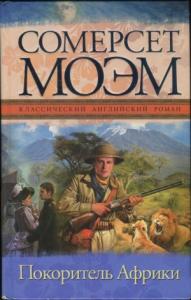
The Moon and Sixpence - The Original Classic Edition скачать fb2
Сомерсет Уильям Моэм - The Moon and Sixpence - The Original Classic Edition краткое содержание
It has been noted many times that artists are usually not the most pleasant human beings to be around; Maughams novel is, among other things, a compelling examination of why this is so. The obsessed artist who dominates this book, Charles Strickland (based on the notorious Paul Gauguin), walks away from his cushy middle-class existence in England to pursue his dream to paint, amid frightful poverty, in France. Strickland is an unforgettable character, an inarticulate, brutishly sensual creature, callously indifferent to his fellow man and even his own health, who lives only to record his private visions on canvas. <p> It would be a mistake to read this novel as an inspiring tale of the triumph of the spirit. Strickland is an appalling human being–but the world itself, Maugham seems to say, is a cruel, forbidding place. The author toys with the (strongly Nietzschean) idea that men like Charles Strickland may somehow be closer to the mad pulse of life, and cannot therefore be dismissed as mere egotists. The moralists among us, the book suggests, are simply shrinking violets if not outright hypocrites. It is not a very cheery conception of humanity (and arguably not an accurate one), but the questions Maugham raises are fascinating. Aside from that, hes a wonderful storyteller. This book is a real page turner. <p> When he first meets Charles Strickland, a London stockbroker, the young narrator of this novel thinks of him as good, honest, dull, and plain. When Strickland suddenly abandons his wife and children and takes off for Paris, however, the narrator decides he is a cad. Though he has had no training, Strickland has decided to become an artist, a drive so strong that he is willing to sacrifice everything toward that end. Anti-social, and feeling no obligation to observe even the smallest social decencies, Strickland becomes increasingly boorish as he practices his art. Eventually, he makes his way to Tahiti, where he marries, moves to a remote cottage, and spends the rest of his life devoted to his painting. <p> Basing the novel loosely on the life of Paul Gauguin, Maugham creates an involving and often exciting story. His narrator is a writer who feels impelled, after Stricklands death and posthumous success, to set down his memories of his early interactions with Strickland in London and Paris. Because the narrator never saw Strickland after he left Paris, he depends on his meetings with a ship captain and a woman in Papeete for information about Strickland after Stricklands arrival in Tahiti. The ship captain is described as a story-teller who may be spinning tall tales, a constant reminder to the reader that this is fiction, and not a biography of Gauguin. <p> By depicting Strickland as a dull, plain man suddenly gripped by an obsession so overwhelming that nothing else matters to him, Maugham involves the reader in his actions, which even the narrator claims not to understand. The least convincing aspect of Stricklands characterization is the narrators observation that Strickland is completely indifferent to his wife of seventeen years and his children. No confrontation between Strickland and his wife appears, and one wonders if perhaps Maugham found himself unable to depict such an abandonment realistically. The story moves quickly, however, and whatever is sacrificed in the characterization is more than recouped in the plot and its development. <p> Straightforward in its story line, the novel is romantic in its depiction of the artist in the grip of an obsession, his subsequent abandonment of civilization and return to nature, his suffering of a long and terminal illness (during which he paints his masterpiece), and the fate of this creation. Good, old-fashioned story-telling at its best, this uncomplicated story, written in 1919, still has broad appeal.
Скачать книгу «The Moon and Sixpence - The Original Classic Edition» Сомерсет Уильям Моэм
Чтобы оставить свою оценку и/или комментарий, Вам нужно войти под своей учетной записью или зарегистрироваться







